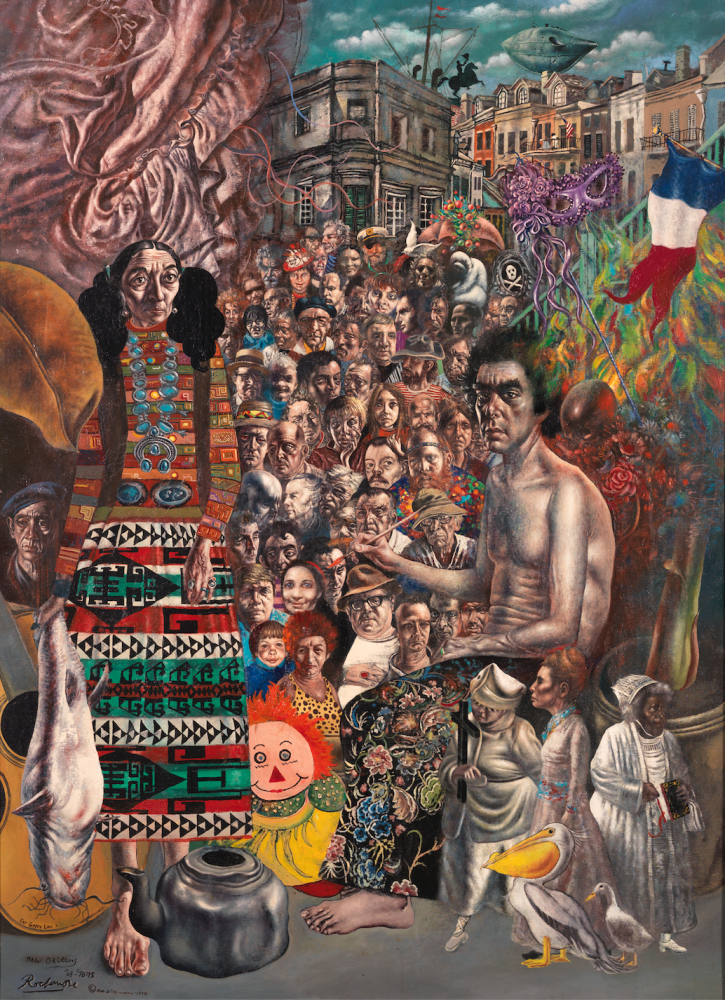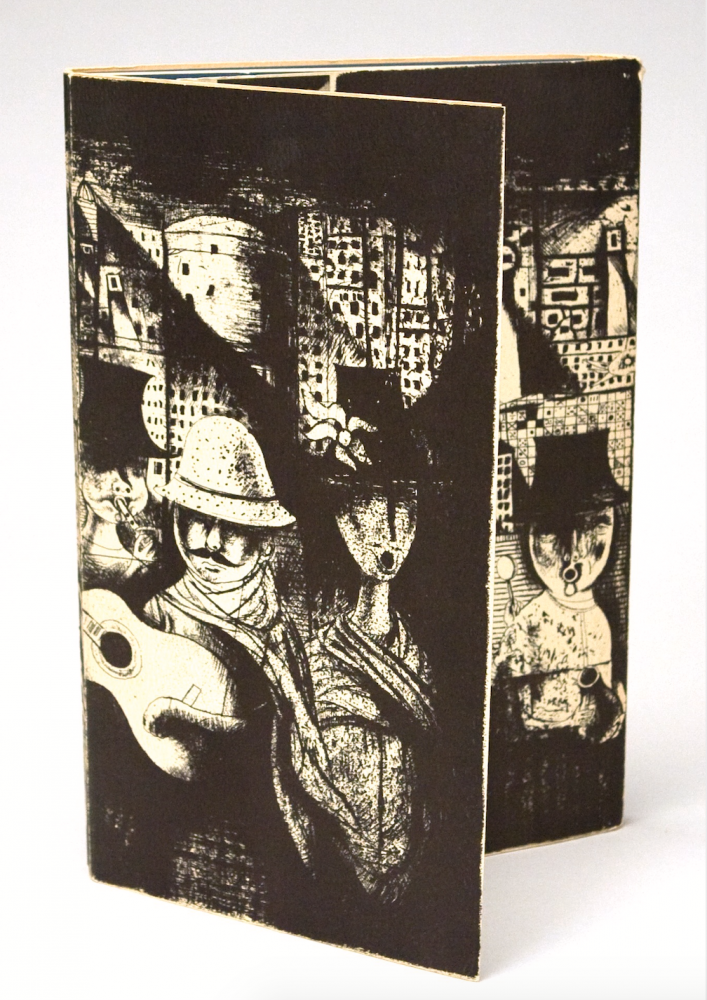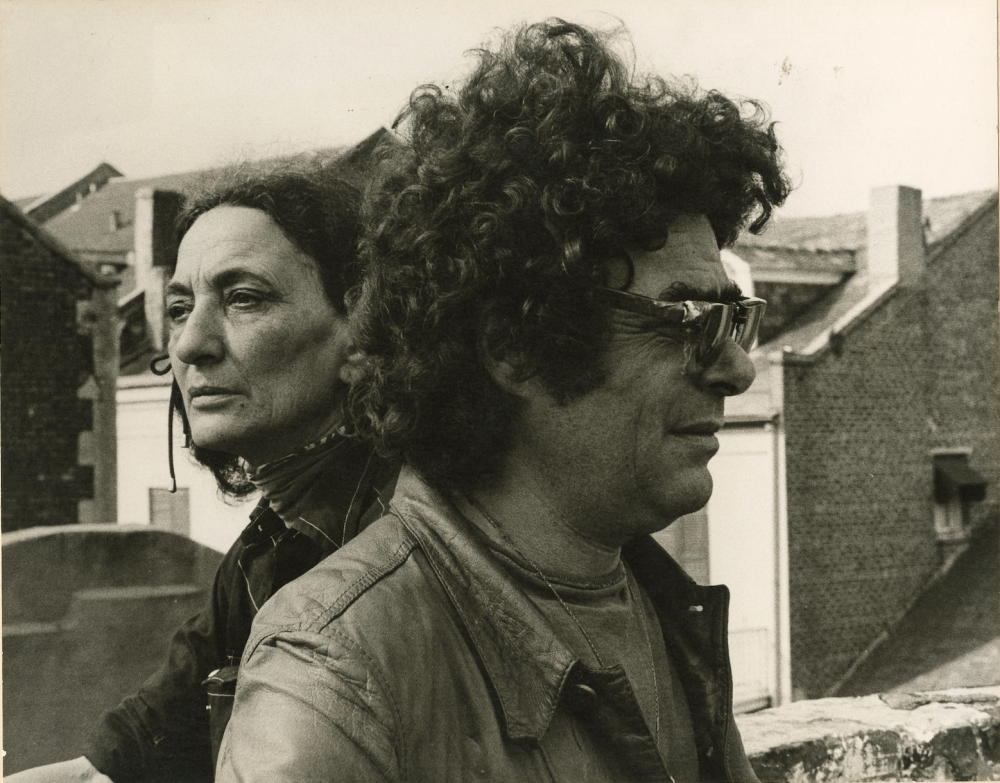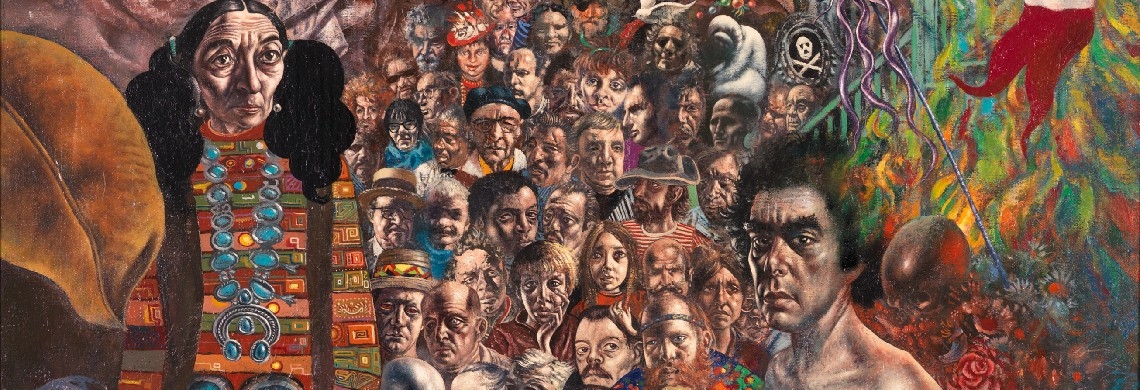Homage to the French Quarter is arguably the most well-known work by painter Noel Rockmore. It took Rockmore from 1968 to 1975 to complete, after which it was a longtime fixture at Johnny White’s Bar on Saint Peter Street in the Vieux Carré. At some point it was removed and replaced with a life-size photograph of the painting by Jack Beech, a New Orleans–based industrial and aerial photographer. The location of Homage after its residence at Johnny White’s is unknown, but in 2007 it was acquired by JoAnn Clevenger, proprietor of the beloved Uptown restaurant Upperline. It hung in the entryway, greeting guests as they arrived and bidding them farewell as they left, until the coronavirus pandemic prompted the closure of the restaurant in March 2020. (Clevenger had intended to reopen, but in November 2021 she announced her plans to retire and to sell the restaurant, which remains closed.)
The Historic New Orleans Collection recently acquired Homage to the French Quarter from Clevenger, along with a watercolor titled Patrons of the Bourbon House by Kay “Kaja” Johnson, a hand-painted sign advertising the musical One Mo’ Time at the Toulouse Theatre, and a tinted photograph of Clevenger by Judy Cooper.

Rockmore took seven years to craft his meticulous Homage to the French Quarter, which features 64 Vieux Carré denizens, including the publisher Gypsy Lou Webb and Rockmore himself, brush in hand, in the foreground. (THNOC, 2022.0058.1)
According to Clevenger, Homage to the French Quarter was Rockmore’s way of paying tribute to the French Quarter community that meant so much to so many residents in the 1960s. The painting’s composition is filled with neighborhood imagery, including the Civil War–era submarine housed at the Cabildo, which he rendered floating in the sky; Jackson Square’s Andrew Jackson equestrian statue; and French Quarter buildings such as the Skyscraper, a four-story building at the corner of Royal and Saint Peter Streets in which many bohemians of the 1950s and ’60s resided. For most of the 20th century, the Vieux Carré was a hub for the arts; particularly in the middle of the century, its beauty, history, and low rent attracted many artists, writers, and musicians from across the country in search of inspiration on the cheap.

The bohemian art scene of the French Quarter in the 1960s is well represented by this collection of Charles Bukowski poems, Crucifix in a Deathhand: New Poems, 1963–1965. Published by the Loujon Press in 1965, the collection was illustrated with etchings by Rockmore. (THNOC, 83-545-RL)
Though the landmarks in Homage are striking, the focal point of the painting is the crowd of 64 people who lived and worked in the French Quarter, more than half of whom have been identified thus far. Among those depicted are artists Charles Richards, Andy Lang, Colette Heldner, Richard Hoffman, Francisco McBride, Johnny Donnels, Hubert Hanush, Bruce Brice, Bob Rue, Howard Mitcham, and Sister Gertrude Morgan. Rockmore himself is seated in the foreground, sans shirt, his gaze fixed upon the viewer.
Restaurant and bar owners Max Clevenger, Johnny White, and Robert “Sonny” Vaucresson are represented, as are jazz enthusiasts Larry Borenstein, Bill Russell, Allan and Sandy Jaffe, and Barbara Reid. Other notable people in the crowd are Ruth Moulon, a.k.a. Ruthie the Duck Girl; Mike Stark, a maskmaker who founded a free medical clinic on Decatur Street; Ziggy the Hat, a bookie based at the Bourbon House for many years; Mrs. Lopez, a religious French Quarter denizen who carried a heavy cross everywhere; and Gypsy Lou and Jon Webb, founders of the alternative publisher Loujon Press.

Gypsy Lou Webb, left, and Rockmore, right, were collaborators and friends. This portrait, taken in 1980 by Johnny Donnels, shows them surveying the neighborhood that inspired them. (THNOC, gift of Joan T. Donnels, 2010.0068.1.2)
Beyond the people and monuments depicted in Homage, the piece in its entirety gives the viewer a sense of the wonder and community that existed in the French Quarter in the 1960s and ’70s. The people in Homage not only coexisted; they also often influenced one another, making the scene full of life, energy, and inspiration.
Though a small community of “Quarterites” remains, a residential community such as the one seen in Homage might not be seen again, due to rising real estate prices, fewer neighborhood goods and services, an uptick of part-time residents, and short-term rentals and timeshares.












